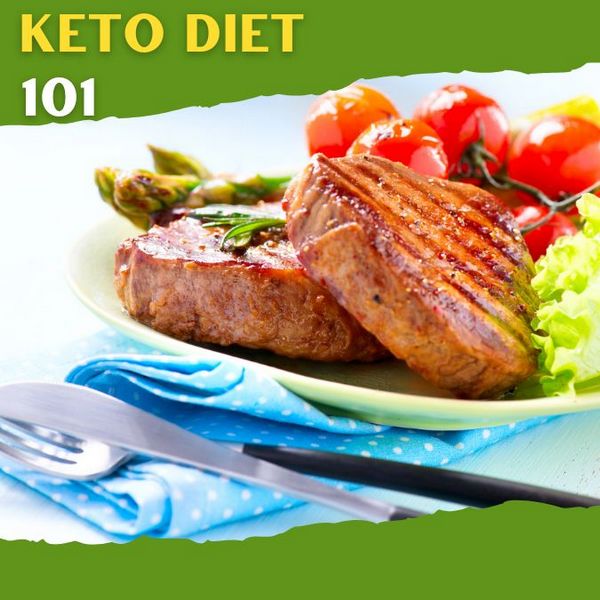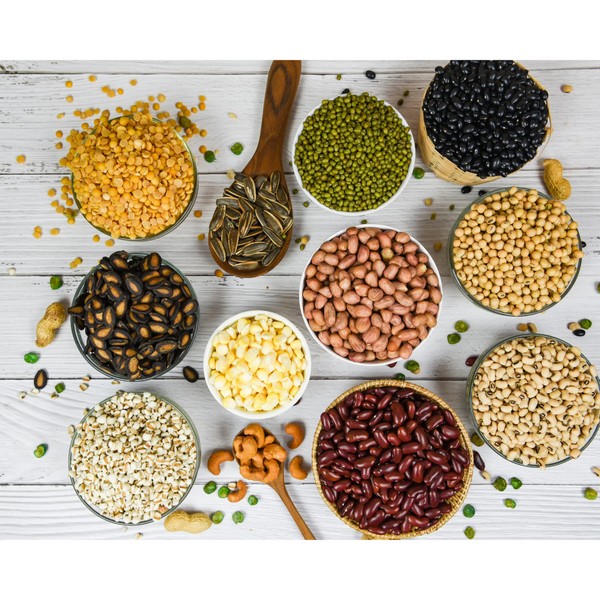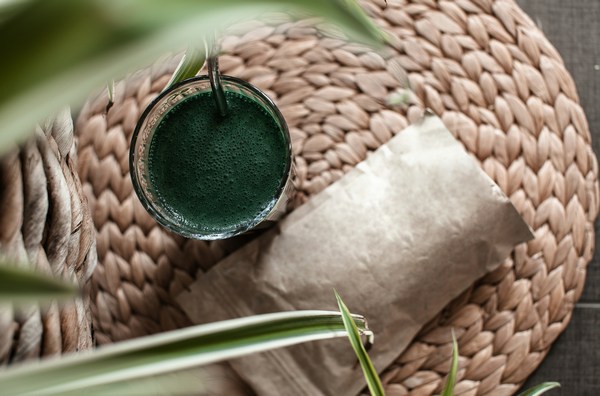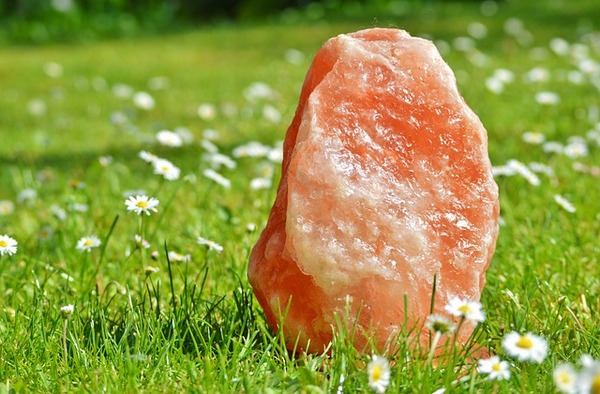Key Takeaways
- ALA (Alpha-Linolenic Acid) is found in flaxseeds, chia seeds, and walnuts, but converts poorly to DHA and EPA.
- DHA and EPA are critical long-chain omega-3s found in animal sources like fatty fish and are essential for brain and heart health.
- The body converts ALA to DHA and EPA inefficiently, with conversion rates often less than 10%.
- Direct consumption of DHA and EPA from animal sources is more effective for meeting nutritional needs.
- Vegans may need to rely on algal oil to obtain sufficient DHA and EPA.
Introduction
Omega-3 fatty acids are vital for numerous bodily functions, particularly brain and heart health.
There are different types of omega-3s, with ALA being a short-chain omega-3 found in plant foods, and DHA and EPA being long-chain omega-3s primarily sourced from animal products.
Understanding the differences between these fatty acids is important, especially for those following specific dietary preferences like veganism.
Overview of ALA (Alpha-Linolenic Acid)

ALA is a plant-based omega-3 fatty acid commonly found in foods like flaxseeds, chia seeds, and walnuts.
While ALA plays a role in maintaining overall health, it must be converted into DHA and EPA—forms of omega-3 that the body can directly utilize.
Unfortunately, the conversion rate of ALA to DHA and EPA is often less than 10%, making it a less efficient source of these critical nutrients.
DHA (Docosahexaenoic Acid) and EPA (Eicosapentaenoic Acid)

DHA and EPA are long-chain omega-3 fatty acids predominantly found in animal sources, such as fatty fish, cod liver oil, and organ meats.
These omega-3s are essential for brain function, heart health, and reducing inflammation.
Unlike ALA, DHA and EPA are directly available for the body to use, making them more effective at supporting these critical bodily functions.
Bioavailability and Nutritional Impact
The bioavailability of omega-3s refers to how well the body can absorb and use these nutrients.
ALA has lower bioavailability due to the inefficient conversion process, which means the body struggles to get enough DHA and EPA from ALA alone.
In contrast, DHA and EPA from animal sources are highly bioavailable, providing immediate nutritional benefits without the need for conversion.
Health Implications

Relying solely on ALA for omega-3 intake can lead to deficiencies in DHA and EPA, which are vital for cognitive health, cardiovascular function, and inflammation control.
Adequate intake of DHA and EPA has been linked to reduced risks of heart disease, improved brain health, and better inflammatory responses.
Vegans who do not consume DHA and EPA from animal sources may face health challenges if they don’t supplement properly.
Vegan Alternatives and Considerations
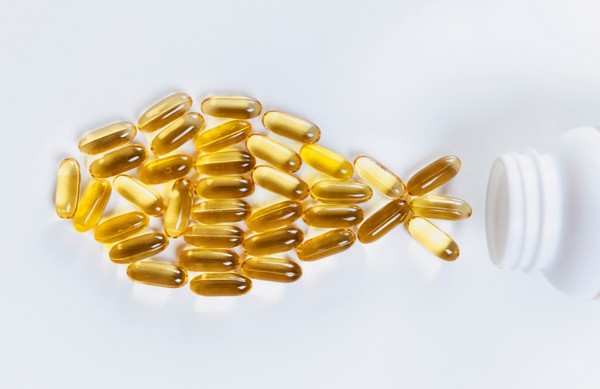
Vegans looking to meet their omega-3 needs can turn to algal oil, a plant-based source of DHA and EPA.
While algal oil can provide these essential fatty acids, it may not be as easily accessible or affordable as traditional animal sources.
Despite this, it remains the best option for vegans who want to ensure they receive adequate amounts of DHA and EPA.
Conclusion
ALA, DHA, and EPA are all important omega-3 fatty acids, but they differ significantly in their sources, bioavailability, and effectiveness. For those following a vegan diet, understanding the limitations of ALA and the necessity of supplementing with DHA and EPA is crucial for maintaining optimal health. Animal-based omega-3s remain the most efficient and effective source, but with careful planning and supplementation, vegans can also meet their omega-3 needs.
FAQ
What are the best vegan sources of ALA?
Flaxseeds, chia seeds, and walnuts are among the richest sources of ALA.
Can ALA fully replace DHA and EPA in a vegan diet?
No, due to low conversion rates, ALA cannot fully replace DHA and EPA.
Are there vegan sources of DHA and EPA?
Yes, algal oil is a vegan source of DHA and EPA.
What happens if I don’t get enough DHA and EPA?
Insufficient intake can affect brain function, heart health, and inflammation levels.
Is it necessary to supplement with DHA and EPA if I’m vegan?
Yes, supplementation with algal oil is recommended to ensure adequate intake.
Research
Attar-Bashi, N.M., Weisinger, R.S., Begg, D.P., Li, D. and Sinclair, A.J., 2007. Failure of conjugated linoleic acid supplementation to enhance biosynthesis of docosahexaenoic acid from α-linolenic acid in healthy human volunteers. Prostaglandins, Leukotrienes and Essential Fatty Acids, 76(3), pp.121–130.
Baker, E.J., Miles, E.A., Burdge, G.C., Yaqoob, P. and Calder, P.C., 2016. Metabolism and functional effects of plant-derived omega-3 fatty acids in humans. Progress in Lipid Research, 64, pp.30–56.
Brenna, J.T., Salem, N., Sinclair, A.J. and Cunnane, S.C., 2009. α-Linolenic acid supplementation and conversion to n-3 long-chain polyunsaturated fatty acids in humans. Prostaglandins, Leukotrienes and Essential Fatty Acids, [online] 80(2–3), pp.85–91.
https://doi.org/10.1016/j.plefa.2009.01.004.
Burdge, G.C., 2006. Metabolism of α-linolenic acid in humans. Prostaglandins, Leukotrienes and Essential Fatty Acids, 75(3), pp.161–168.
Burdge, G.C. and Calder, P.C., 2005. α‐Linolenic acid metabolism in adult humans: the effects of gender and age on conversion to longer‐chain polyunsaturated fatty acids. European Journal of Lipid Science and Technology, 107(6), pp.426–439.
Burdge, G.C. and Calder, P.C., 2006. Dietary α-linolenic acid and health-related outcomes: a metabolic perspective. Nutrition Research Reviews, 19(1), pp.26–52.
Burdge, G.C. and Wootton, S.A., 2002. Conversion of α-linolenic acid to eicosapentaenoic, docosapentaenoic and docosahexaenoic acids in young women. British Journal of Nutrition, 88(4), pp.411–420.
Burdge, G.C., Jones, A.E. and Wootton, S.A., 2002. Eicosapentaenoic and docosapentaenoic acids are the principal products of α-linolenic acid metabolism in young men. British Journal of Nutrition, 88(4), pp.355–363.
Chen, H., Deng, G., Zhou, Q., Chu, X., Su, M., Wei, Y., Li, L. and Zhang, Z., 2020. Effects of eicosapentaenoic acid and docosahexaenoic acid versus α-linolenic acid supplementation on cardiometabolic risk factors: a meta-analysis of randomized controlled trials. Food & Function, 11(3), pp.1919–1932.
Egert, S., Kannenberg, F., Somoza, V., Erbersdobler, H.F. and Wahrburg, U., 2009. Dietary α-Linolenic Acid, EPA, and DHA have differential effects on LDL fatty acid composition but similar effects on serum lipid profiles in normolipidemic humans. The Journal of Nutrition, 139(5), pp.861–868.
Fleming, J.A. and Kris-Etherton, P.M., 2014. The evidence for α-linolenic acid and cardiovascular disease benefits: comparisons with eicosapentaenoic acid and docosahexaenoic acid. Advances in Nutrition, 5(6), pp.863S-876S.
Gerster, H., 1998. Can adults adequately convert α-linolenic acid (18: 3n-3) to eicosapentaenoic acid (20: 5n-3) and docosahexaenoic acid (22: 6n-3)?. International Journal for Vitamin and Nutrition Research, 68(3), pp.159-173.
Gibson, R., Neumann, M., Lien, E., Boyd, K., & Tu, W., 2013. Docosahexaenoic acid synthesis from alpha-linolenic acid is inhibited by diets high in polyunsaturated fatty acids. Prostaglandins, Leukotrienes and Essential Fatty Acids, 88(1), pp.139-146.
Gibson, R.A., Muhlhausler, B. and Makrides, M., Conversion of linoleic acid and alpha-linolenic acid to long-chain polyunsaturated fatty acids (LCPUFAs), with a focus on pregnancy, lactation and the first 2 years of life. Maternal & Child Nutrition, 7, pp.17-26.
Goyens, P.L., Spilker, M.E., Zock, P.L., Katan, M.B. and Mensink, R.P., 2006. Conversion of α-linolenic acid in humans is influenced by the absolute amounts of α-linolenic acid and linoleic acid in the diet and not by their ratio. The American Journal of Clinical Nutrition, [online] 84(1), pp.44–53.
https://doi.org/10.1093/ajcn/84.1.44.
Greupner, T., Kutzner, L., Nolte, F., Strangmann, A., Kohrs, H., Hahn, A., Schebb, N.H. and Schuchardt, J.P., 2018. Effects of a 12-week high-α-linolenic acid intervention on EPA and DHA concentrations in red blood cells and plasma oxylipin pattern in subjects with a low EPA and DHA status. Food & Function, [online] 9(3), pp.1587–1600.
https://doi.org/10.1039/c7fo01809f.
Liou, Y.A., King, D.J., Zibrik, D. and Innis, S.M., 2007. Decreasing linoleic acid with constant α-linolenic acid in dietary fats increases (n-3) eicosapentaenoic acid in plasma phospholipids in healthy men. The Journal of Nutrition, 137(4), pp.945–952.
Mantzioris, E., James, M., Gibson, R. and Cleland, L., 1995. Differences exist in the relationships between dietary linoleic and alpha-linolenic acids and their respective long-chain metabolites. The American Journal of Clinical Nutrition, 61(2), pp.320–324.
Rapoport, S.I., Rao, J.S. and Igarashi, M., 2007. Brain metabolism of nutritionally essential polyunsaturated fatty acids depends on both the diet and the liver. Prostaglandins, Leukotrienes and Essential Fatty Acids, [online] 77(5–6), pp.251–261.
https://doi.org/10.1016/j.plefa.2007.10.023.
Salem, N. and Eggersdorfer, M., 2015. Is the world supply of omega-3 fatty acids adequate for optimal human nutrition?. Current Opinion in Clinical Nutrition and Metabolic Care, 18(2), pp.147–154.
Takic, M., Pokimica, B., Petrovic-Oggiano, G. and Popovic, T., 2022. Effects of dietary α-linolenic acid treatment and the efficiency of its conversion to eicosapentaenoic and docosahexaenoic acids in obesity and related diseases. Molecules, 27(14), p.4471.
Wendland, E., 2006. Effect of α-linolenic acid on cardiovascular risk markers: a systematic review. *Heart*, 92(2), pp.166–169.
Healthy Fat: is Butter Better?
Key Takeaways Saturated fats, like those found in butter, may not be as harmful as once thought and can be part of a healthy diet….
Natural Treatment for Irritable Bowel Syndrome (IBS): Effective Remedies Explored
Understanding IBSSymptoms of IBSRole of Diet in IBSNatural Remedies for IBSSupplements for IBSRole of Probiotics in IBSFrequently Asked Questions Understanding IBS Irritable Bowel Syndrome (IBS)…
6 Best Natural Ways to Manage Your Blood Sugar: A Quick & Easy Guide
1. Intermittent fasting2. Exercise3. Dietary fiber4. Sleep5. Weight loss6. SupplementationBioclinic NaturalsPGX BiotiquestSugar Shift Every time you eat it, it’s plotting something sinister. Sugar isn’t as…
Conjugated Linoleic Acid (CLA): Benefits & Sources
Key Takeaways CLA is a type of fatty acid found primarily in animal products like beef and dairy. Known for potential benefits such as weight…
Magnesium: Better Sleep, Stress Relief and More
Cholesterol Misconceptions: Separating Fact from Fiction
Key Takeaways: High inflammation and blood pressure are major risk factors for heart disease. Cholesterol is vital for hormone production, cell membrane structure, and digestion,…
Is Eating Sugar Really That Bad For Your Health?
Should You Really Be Concerned? In short, YES! Thank you, that’s all folks, and do have a good evening. Seriously though, extensive research has established…
Benefits of Sea Moss Explained
Key Takeaways Rich in Nutrients: Sea moss is packed with essential vitamins, minerals, and antioxidants, supporting overall health and wellness. Supports Immune Function: Its high…
How Cod Liver Oil Can Transform Your Health and Wellness
Cod liver oil has been used for centuries as a natural remedy for various health conditions. Packed with essential nutrients and fatty acids, cod liver…
Creatine Myths Debunked: Separating Fact from Fiction
Key Takeaways Common myths about creatine, such as it causing kidney damage, weight gain, and being a steroid, are widespread but unsupported by scientific evidence….
Allulose: The Best Sugar Alternative
Key Takeaways Allulose is a low-calorie sweetener found naturally in some fruits. It does not raise blood sugar levels, making it suitable for diabetics. Allulose…
Keto Diet 101: A Complete Beginner’s Guide
Key Highlights The ketogenic diet is a low-carb, high-fat diet that can lead to weight loss and has many health benefits. By reducing carbohydrate intake…
Whole Food Vitamin C Complex: Expert Tips for Health
Key Highlights Whole food vitamin C complex is essential for a strong immune system and overall health. Unlike synthetic ascorbic acid, whole food vitamin C…
Protein: You probably need more
Key Takeaways Protein is needed for building and repairing body tissues. It supports muscle growth, immune function, and hormone production. Bioavailable sources of protein include…
5 Major Benefits of Omega-3 Fatty Acids
Key Takeaways Omega-3 fatty acids support heart health by reducing triglycerides and lowering blood pressure. They play an important role in brain function and development,…
CoQ10: What Is It and Why Is It Important?
Key Takeaways CoQ10 (Coenzyme Q10) is an antioxidant produced by the body, essential for energy production in cells. Levels of CoQ10 naturally decrease with age…
Increase GLP-1 Agonists Naturally
Grains & Legumes Secretly Harming Your Health? Find Out Now!
Key Takeaways: – Grains and legumes contain antinutrients like lectins and phytic acid, which can interfere with nutrient absorption. – These foods may trigger digestive…
Silica: for Healthier Skin, Hair, and Nails
Carnivore Diet: Benefits, Risks, Food List & More
Key Takeaways The carnivore diet is a keto diet that only allows for animal-based foods, and has potential health benefits. Tips for success include hydrating,…
The Impact of Ultra-Processed Foods on Your Wellbeing
Every bite we take is a step toward either wellness or illness. In our fast-paced world, ultra-processed foods have become a staple, silently shaping our…
Taurine: The Mighty Amino Acid for Optimal Health
Key Takeaways Taurine supports heart health, regulates blood pressure, and reduces oxidative stress. Essential for muscle function, brain health, and cognitive function. Aids in insulin…
13 Most Dangerous Foods Revealed
Key Highlights Fugu, or pufferfish, is one of the most poisonous foods in the world, with its organs containing a neurotoxin that can paralyze motor…
11 Electrifying Health Benefits of Trace Minerals
What are Trace Minerals?The Major Roles of Trace MineralsSources of Trace MineralsDeficiencies in Trace MineralsThe Impact of Trace Minerals on Specific Health ConditionsFrequently Asked Questions…
L-Glutamine and Gut Health: Benefits and Side Effects
Key Takeaways L-Glutamine is essential for gut health. Benefits include improved digestion and reduced inflammation. Potential side effects are rare but can occur in high…
8 Key Signs of Nutrient Deficiency
Key Takeaways Magnesium: A multitasker that aids in over 300 biochemical reactions in the body. Copper: Supports neurological function, cardiovascular and immune system health, iron…
Spirulina: Health Benefits and Uses
Key Takeaways Spirulina boosts immune function with its high nutrient content and antioxidant properties. Rich in proteins and essential vitamins, enhances overall nutrition. Helps reduce…
Actual Superfoods: Real Foods You Should Be Eating
Key Takeaways Superfoods are nutrient-dense foods, offering essential vitamins, minerals, and fats. Prioritize high-quality sources for optimal nutrition. They support overall health, boost energy, and…
Iron Overload: Symptoms & Prevention Tips
Key Takeaways: Iron overload happens when the body absorbs excessive iron, which can damage organs. Common symptoms include fatigue, joint pain, and skin changes. Early…
Vitamin A (Retinol): Essential Nutrient for Health
Key Takeaways: Natural Vitamin A, also known as Retinol, is crucial for vision, immune function, and skin health. Retinol is essential for healthy vision, particularly…
Liver: 5 Surprising Benefits Backed by Science
Hold on! Don’t run away! You need to read this. Liver is a highly nutritious organ meat that is often overlooked in modern diets. Packed…
5-HTP: Natural Ways to Boost Serotonin and Improve Mood
Key Takeaways: 5-HTP is a natural compound that helps boost serotonin levels in the brain. It can support mood regulation, sleep improvement, and stress reduction….
Calcium Supplements: What You Need to Know
Key Takeaways Calcium supplements have been linked to heart disease and kidney stones. Excess calcium from supplements can lead to imbalances and health issues. Natural…
Red Palm Oil: Unveiling The Potent Health Benefits
Struggling to find the right oil for your health and kitchen? Red palm oil is packed with nutrients that might just be what you need….
Eggs: A Comprehensive Guide
Key Highlights Eggs are a nutritional powerhouse, containing all the essential vitamins and minerals needed for overall health. Vital role in a balanced diet, providing…
Medium Chain Triglycerides (MCTs): Uncovering 5 Health Benefits
This potent, natural source of energy has gained considerable attention in recent years for its impressive array of benefits. MCT oil is a versatile addition…
Vitamin E Complex
Key Takeaways Vitamin E is a powerful antioxidant that protects cells from oxidative damage, reducing the risk of chronic diseases. The vitamin E complex includes…
Zinc Supplements: Risks and Dangers
Key Takeaways Zinc supports immunity, wound healing, and cell growth. High zinc supplement doses can cause health problems. Always consult a healthcare provider before taking…
What You Need to Know About Salt and Your Health
Table of ContentsThe Health Benefits of Unrefined Sea SaltElectrolyte BalanceMineral ContentImproved HydrationBoosted Energy LevelsImmune SupportImproved DigestionBalanced pH LevelsReduced Water RetentionHeart Health SupportStronger Bones and TeethEnhanced…
Boron: Benefits of a Lesser-Known Mineral
Key Takeaways Boron is a trace mineral with significant health benefits. It supports brain function, bone health, and hormonal balance. Understanding boron’s role can improve…
Do This! The Ultimate Guide to Fasting Safely and Effectively
In our increasingly busy lives, finding time to take care of our bodies can often take a backseat. One method that has gained attention recently…
Berberine Has 11 More Incredible Benefits Than You Thought
Berberine is a compound found in several plants that has been used for centuries in traditional Chinese medicine and Ayurveda. It has recently gained popularity…
How Stabilized Rice Bran Supports Digestive & Heart Health
Key Takeaways – Stabilized rice bran is a nutrient-rich source of vitamins, minerals, and antioxidants. – The stabilization process prevents rancidity, making it a long-lasting…
Copper: Little-Known Health Benefits
Key Takeaways Copper is an essential trace mineral with benefits, including ceruloplasmin production, energy production and antioxidant properties. Copper is critical for brain health by…
L-Carnitine: Benefits, Dosage, and Side Effects
Key Takeaways L-Carnitine supports fat metabolism and energy production. Benefits include enhanced exercise performance and improved heart health. Proper dosing minimizes potential side effects. Understanding…
Postbiotics: What They Are and Why They Are Important
Key Takeaways Postbiotics 101: They’re beneficial by-products from probiotics that consume prebiotics Boosts Immunity: Postbiotics sharpen your immune system, helping fight off pathogens and reducing…
Benefits of Nutritional Yeast
Key Takeaways Nutritional yeast is a rich source of vitamins and minerals. It supports immune function and promotes skin health. Its cheesy flavor makes it…
Potassium: Benefits & Sources
Key Takeaways Potassium is essential for regulating fluid balance, nerve signals, and muscle function. It supports heart health and helps maintain proper blood pressure. Adequate…
Bee Pollen: Nature’s Secret Superfood
Key Takeaways Bee pollen is packed with essential nutrients and offers numerous health benefits. It supports immune function, boosts energy, and promotes overall well-being. Adding…
TUDCA Benefits for Health
Key Takeaways TUDCA promotes liver health, aiding cell protection and repair. Enhances digestion by improving bile flow and supporting gut health. May protect brain health…
How Collagen Supports Healthy Skin, Joints, and More
Key Takeaways Collagen is the most abundant protein in the body, supporting the structure of skin, bones, and connective tissues. It helps maintain skin elasticity,…
Trimethylglycine TMG: Betaine Anhydrous Explained
Key Takeaways Betaine Anhydrous (TMG) is a compound found naturally in various foods and offers several health benefits. TMG supports liver health by reducing fatty…
Tallow: Benefits, Uses, and Nutrition
Key Takeaways: Tallow is a nutrient-rich animal fat with many practical uses. It contains valuable vitamins such as A, D, E, and K. Tallow is…











